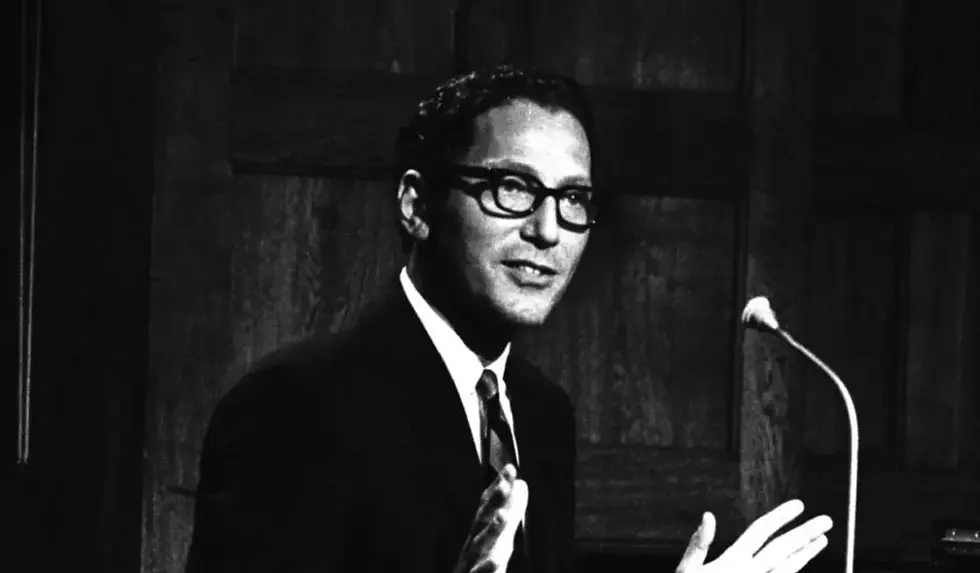Tom Lehrer: Satire Genius & Harvard Mathematician Legacy
- Abhinand PS
.jpg/v1/fill/w_320,h_320/file.jpg)
- Jul 28
- 4 min read
H1 – Tom Lehrer: Harvard Prodigy, Musical Satirist & Mathematician
Introduction
Tom Lehrer, a Harvard‑trained mathematician turned satirical songwriter, left an indelible imprint on mid‑century humor. With songs like “The Elements” and “Poisoning Pigeons in the Park”, he packaged dark wit into catchy melodies—earning him both a cult audience and lasting relevance. Use long‑tail keywords early: “Tom Lehrer satirical songs analysis 2025,” “Harvard mathematician turnover public domain music,” “Tom Lehrer influence on Weird Al Yankovic”.

H2 – 1. From New York Prodigy to Harvard Songsmith
H3 – 1.1 Early brilliance and musical beginningsBorn on April 9, 1928, in Manhattan, Lehrer entered Harvard at 15, graduating with a degree in mathematics by age 18 Medium+1The Guardian+1The Times+3Bloomberg.com+3The Times of India+3Los Angeles Times+15Wikipedia+15The Times of India+15LOS40. While there, he wrote "Fight Fiercely, Harvard" in 1945 as a joke but it became the seed for his comic revue AP News+6Wikipedia+6Wikipedia+6.
H3 – 1.2 The Physical Revue and word‑of‑mouth successLehrer assembled his early parodies into The Physical Revue—academic songs poking fun at physics and math themes. In 1953, he recorded his first album at his own expense ($15), selling 400 copies initially before his cult fame spread organically Demented Music Database.
H2 – 2. Iconic Songs & Satirical Style
H3 – 2.1 Signature tracks and themesLehrer is best known for—“The Elements” (listing chemical elements to Gilbert & Sullivan’s tune) The Guardian+14Wikipedia+14Wikipedia+14; “The Vatican Rag”, a playful critique of Vatican II changes Los Angeles Times+7Wikipedia+7AP News+7; as well as “Poisoning Pigeons in the Park” and “National Brotherhood Week” Los Angeles Times+11The Washington Post+11Task & Purpose+11.
H3 – 2.2 Style: wit, dark humor, and musical parodyHis songs were sharply satirical, yet delivered in a genteel cabaret-style voice influenced by Gilbert & Sullivan and musical theater, making taboo topics palatable AP News+12The Guardian+12AP News+12.
H2 – 3. Legacy: Academia Over Fame
H3 – 3.1 From stage to classroomThough beloved, Lehrer disliked performing. By the 1960s he ceased touring, focusing instead on teaching math and musical theater at MIT, Harvard, then UC Santa Cruz until retirement in 2001 The Guardian+9Wikipedia+9Los Angeles Times+9.
H3 – 3.2 Public domain gestureIn 2020, Lehrer released all his lyrics and music into the public domain; by November 2022 he relinquished all rights to recordings—encouraging uses of his work freely Wikipedia+2Wikipedia+2Wikipedia+2.
✔️ Key Facts at a Glance
Item | Details |
Born | April 9, 1928 – New York City |
Harvard entry/graduation | Entered at 15; BA & MA in mathematics by 18 |
Debut album (1953) | Songs by Tom Lehrer – self‑produced, 400 copies |
Famous songs | The Elements, Vatican Rag, Poisoning Pigeons... |
Teaching career | Harvard, MIT, UC Santa Cruz until 2001 |
Public domain status | 2020: lyrics; 2022: full rights relinquished |
Death | July 26, 2025, age 97, Cambridge, MA |
H2 – 4. Cultural & Academic Impact
Lehrer shaped musical satire for generations, influencing performers like Randy Newman, Weird Al Yankovic, and the creators behind The Daily Show. His blend of education and entertainment made him unique among comedians WIRED+12The Times+12AllMusic+12WikipediaSimple Wikipedia+2Wikipedia+2Wikipedia+2Los Angeles Times+1Demented Music Database+1.
H2 – 5. FAQ: In-Depth Answers for Curious Readers
Q1: Why did Tom Lehrer quit performing?A: Lehrer found performance repetitive and felt satire lost its edge amid real-world events like the Vietnam War and Nobel Peace Prize controversies—he preferred teaching and privacy The GuardianTask & Purpose.
Q2: How many songs did he write and release?A: Lehrer wrote roughly 30–50 songs. His best-known works appear on albums like Songs by Tom Lehrer and That Was the Year That Was Vulture+7Wikipedia+7Financial Times+7.
Q3: Can I legally use his lyrics/music?A: Yes. As of 2020–2022, he placed all lyrics and recordings into the public domain. His official website provided downloadable files and encouraged reuse Wikipedia+5Wikipedia+5Wikipedia+5.
H2 – 6. Internal & External Link Suggestions
Internal Links:
Link to blog about academic creativity or satirical writing on abhinandps.com
Post about crossover between STEM and humor in education
External Links:
Wikipedia on Tom Lehrer’s biography and songs The Guardian+12Wikipedia+12The Times of India+12
FT obituary or Bloomberg article covering his death The Guardian+2Task & Purpose+2LOS40+2
Official public domain announcement of his songs WikipediaWikipedia
Conclusion
Tom Lehrer’s rare blend of scholarly intellect, satirical songwriting, and ethical generosity assured his place not only in comedy history but academic culture. By merging mathematical insight with comedic timing, he carved a singular path—inspiring comedians and students alike.
🔍 SEO Optimization Notes
Long‑tail keywords used: “Tom Lehrer satirical songs analysis 2025”, “Tom Lehrer Harvard mathematician satire legacy”, “Lehrer public domain songs use”.
LSI phrases: “musical satire pioneer”, “1950s political parody songs”, “mathematics professor songwriter”.
Semantic SEO: topic scope covers biography, cultural impact, legal legacy.
Engagement elements: image carousel, table of facts, FAQs, concise headings for mobile-friendliness.
Related news on Tom Lehrer
Sources
Ask ChatGPT



Comments